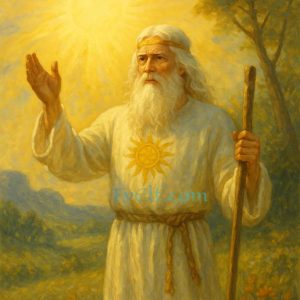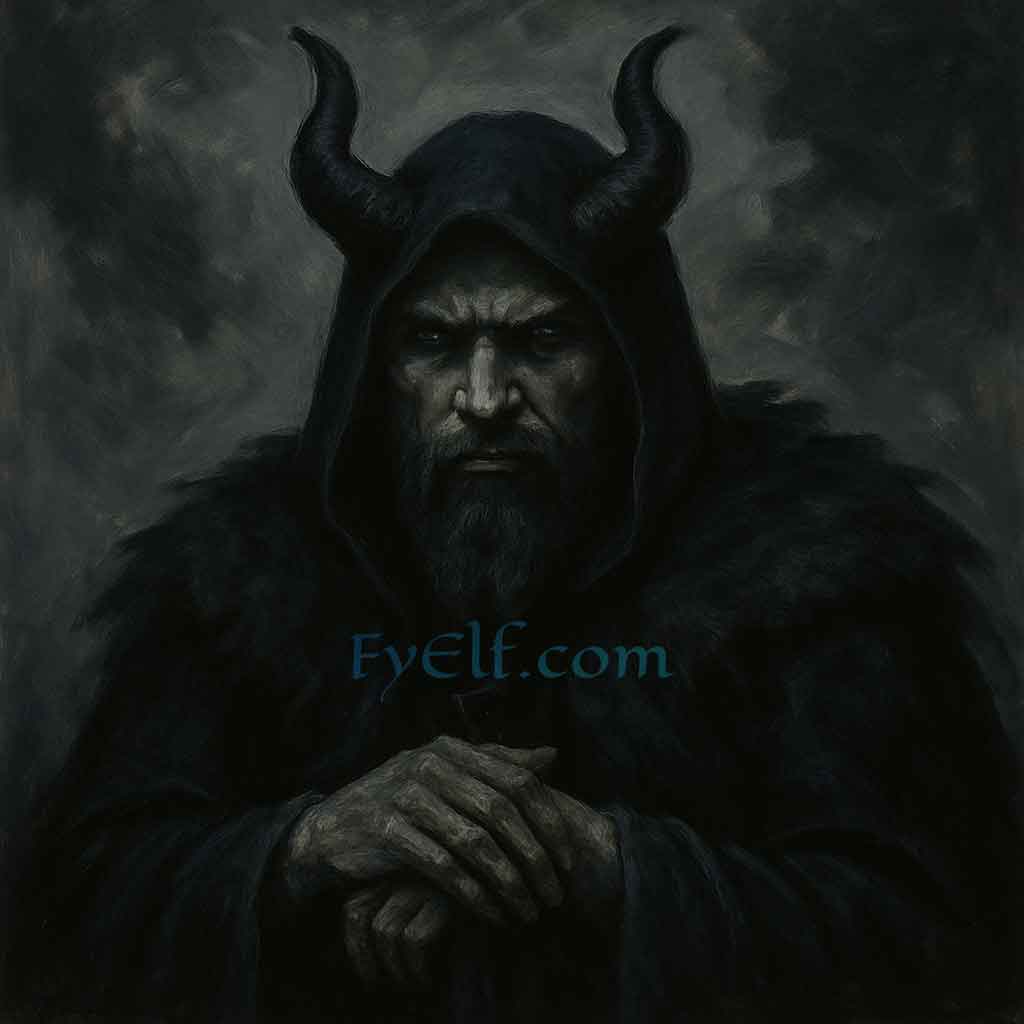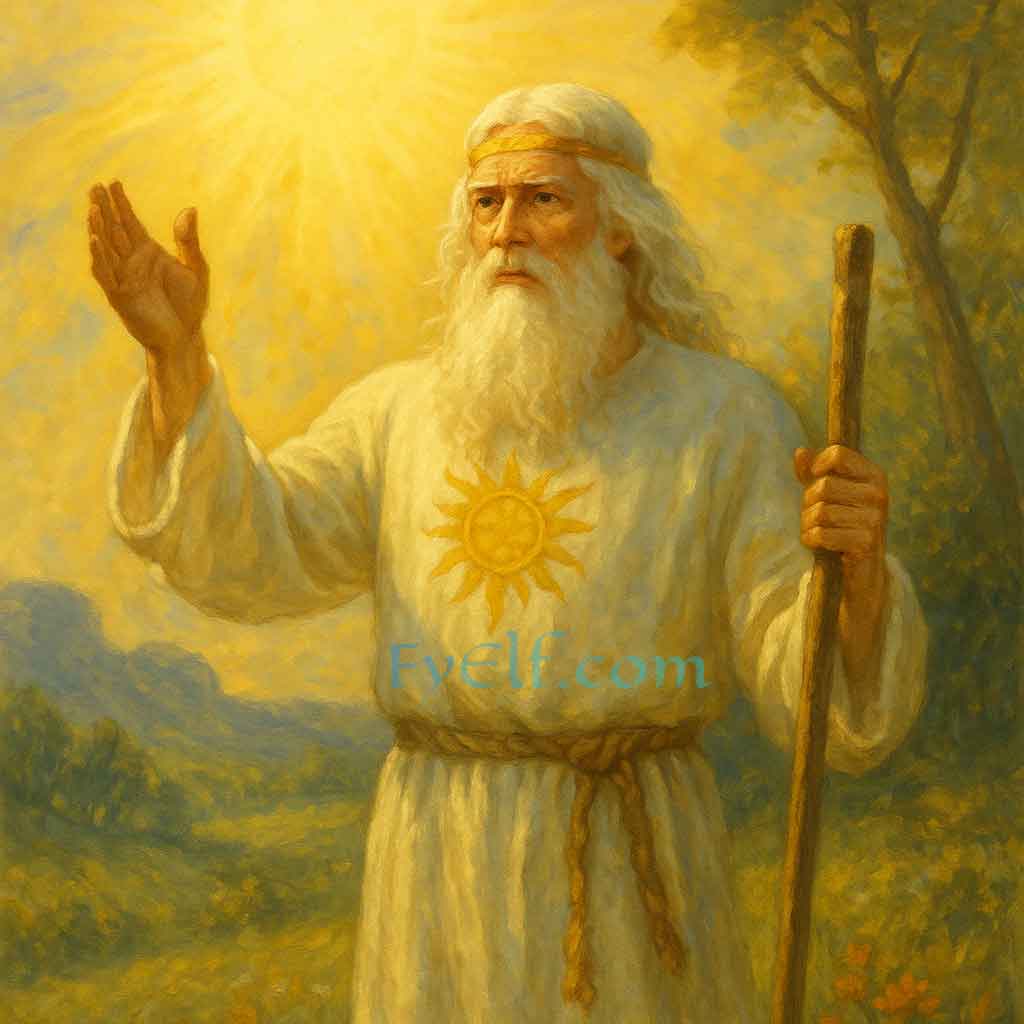Who Is Chernobog in Slavic Mythology?
Chernobog, often translated as the “Black God,” is one of the most mysterious and ominous deities in Slavic mythology. He is portrayed as the embodiment of darkness, misfortune, and chaos, standing in stark contrast to Belobog, the “White God” of light and goodness. Together, they form a cosmic duality that reflects the Slavic worldview of balance between positive and negative forces.
The earliest written mention of Chernobog comes from a 12th-century German chronicle by Helmold of Bosau, who described the Slavic tribes of the Polabian region. According to Helmold, they revered a dark god who brought bad luck and suffering, a deity whom they called Zcerneboch (Chernobog). This record remains one of the few medieval sources that explicitly name him.
The Meaning of the Name “Chernobog” – Black God
The name Chernobog derives from the Old Slavic words cherno (black) and bog (god). Unlike Belobog, whose name radiates purity and fortune, Chernobog’s very title invokes fear and misfortune. In Slavic symbolism, black is not just a color but a representation of death, the unknown, and the destructive side of fate.
Chernobog’s Place in Medieval Sources
Helmold’s Chronica Slavorum (Chronicle of the Slavs) describes the worship of Chernobog as part of ritual feasts. The Slavs reportedly invoked him when they experienced suffering or ill fate, almost as if to explain misfortune through the presence of a divine cause. This testimony highlights the deep respect—and fear—the Slavs held for powers beyond human control.
Chernobog vs. Belobog – The Cosmic Duality
One cannot discuss Chernobog without mentioning Belobog, his eternal counterpart.

Light and Dark in Slavic Belief Systems
Together, the White God and the Black God represent a cosmic polarity similar to the dualities found in other cultures: light vs. dark, good vs. evil, fortune vs. misfortune. Unlike some mythologies where gods of darkness are purely demonic, Chernobog reflects a necessary balance, acknowledging that misfortune is an unavoidable part of existence.
How Chernobog Contrasts with Belobog
Belobog blesses, uplifts, and guides humans toward justice and fortune. Chernobog, in contrast, is blamed for curses, disasters, and bad harvests. While Belobog is imagined as a white-clad wanderer spreading blessings, Chernobog is often envisioned as a shadowy, terrifying figure whose presence brings despair. This dualism underscores the Slavic perception of fate as unpredictable—a blend of blessings and burdens.
The Role of Chernobog in Folklore
While scarce in surviving written mythology, Chernobog appears indirectly in folkloric echoes and symbolic traditions.
Bringer of Misfortune and Curses
Chernobog is frequently portrayed as the source of bad luck, influencing illness, famine, and war. Unlike gods of fertility or justice, his domain is accident and tragedy. For communities dependent on agriculture, the wrath of such a deity symbolized the fear of forces beyond control.
Symbol of Chaos, Suffering, and Bad Luck
Some folklorists suggest that Chernobog may not have been widely worshipped as a god in the sense of veneration but rather acknowledged as a force. People may have spoken of him during times of hardship, treating him as an explanation for suffering and disorder, rather than as a deity they sought blessings from.
Worship and Fear of Chernobog
Historical records give only fragments, but they suggest that rituals involving Chernobog were rooted in avoidance and appeasement.
Rituals and Avoidance Practices
Instead of openly praying to him, communities likely performed appeasement rituals—hoping to prevent his misfortune from striking them. In some traditions, offerings were made to keep evil at bay, reflecting the human attempt to negotiate with forces of darkness.
Christian Chronicles and Demonization
After the Christianization of Slavic lands, deities like Chernobog were often demonized. His dark associations made him an easy candidate for comparison with the Christian Devil. Over time, this association grew stronger, blending his myth with broader ideas of Satanic or demonic powers. This demonization ensured that Chernobog’s legacy remained one of fear and dread.
Chernobog in Modern Culture
Despite scarce historical evidence, Chernobog has captured the imagination of modern writers, artists, and creators.
Chernobog in Literature and Fantasy
Chernobog appears in numerous fantasy novels and stories that reinterpret Slavic mythology. Writers often use him as the archetypal dark god, the bringer of destruction and shadow.
From Folklore to Popular Media
- Disney’s Fantasia (1940): Chernabog (a variation of his name) is portrayed as a colossal winged demon on Bald Mountain, commanding spirits of darkness in one of the film’s most memorable sequences.
- Video Games: Chernobog is featured in titles like SMITE, Castlevania, and Black & White, often as a powerful dark god or demon.
- Comics & TV: Modern fantasy comics and shows also reference him, cementing his place in pop culture as the quintessential Slavic god of darkness.
Through these adaptations, Chernobog has transformed from a feared deity of fate into a universal symbol of shadow and chaos.
Conclusion – The Shadow of the Black God in Slavic Mythology
Chernobog remains one of the most enigmatic figures of Slavic mythology. As the Black God, he represents not just darkness but the very idea of misfortune, suffering, and fate’s cruelty. His eternal opposition to Belobog illustrates the Slavic belief in balance, where life is shaped by both blessings and burdens.
From ancient chronicles to modern media, Chernobog continues to embody the power of shadow, reminding us that mythology often reflects humanity’s deepest fears. Though feared, he stands as an essential part of the Slavic spiritual cosmos, the necessary counterpart to light, fortune, and hope.

